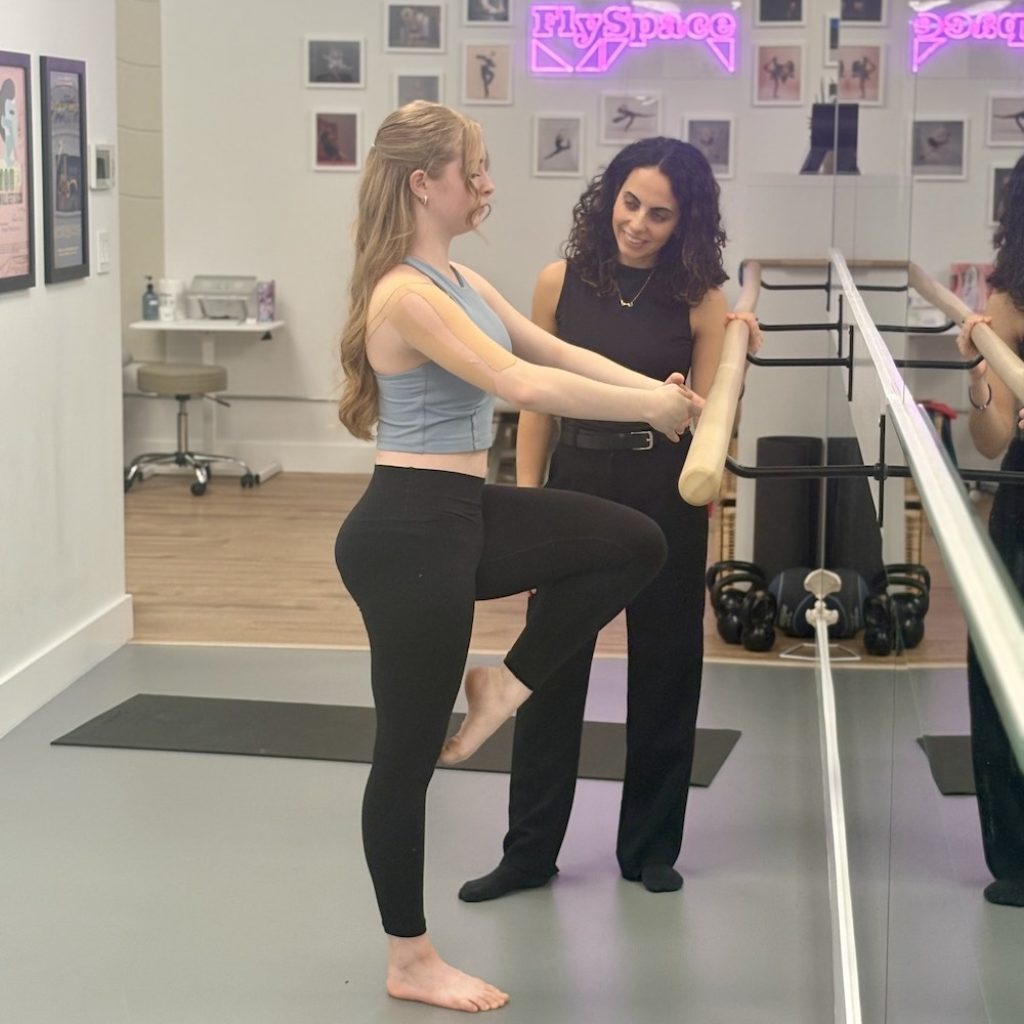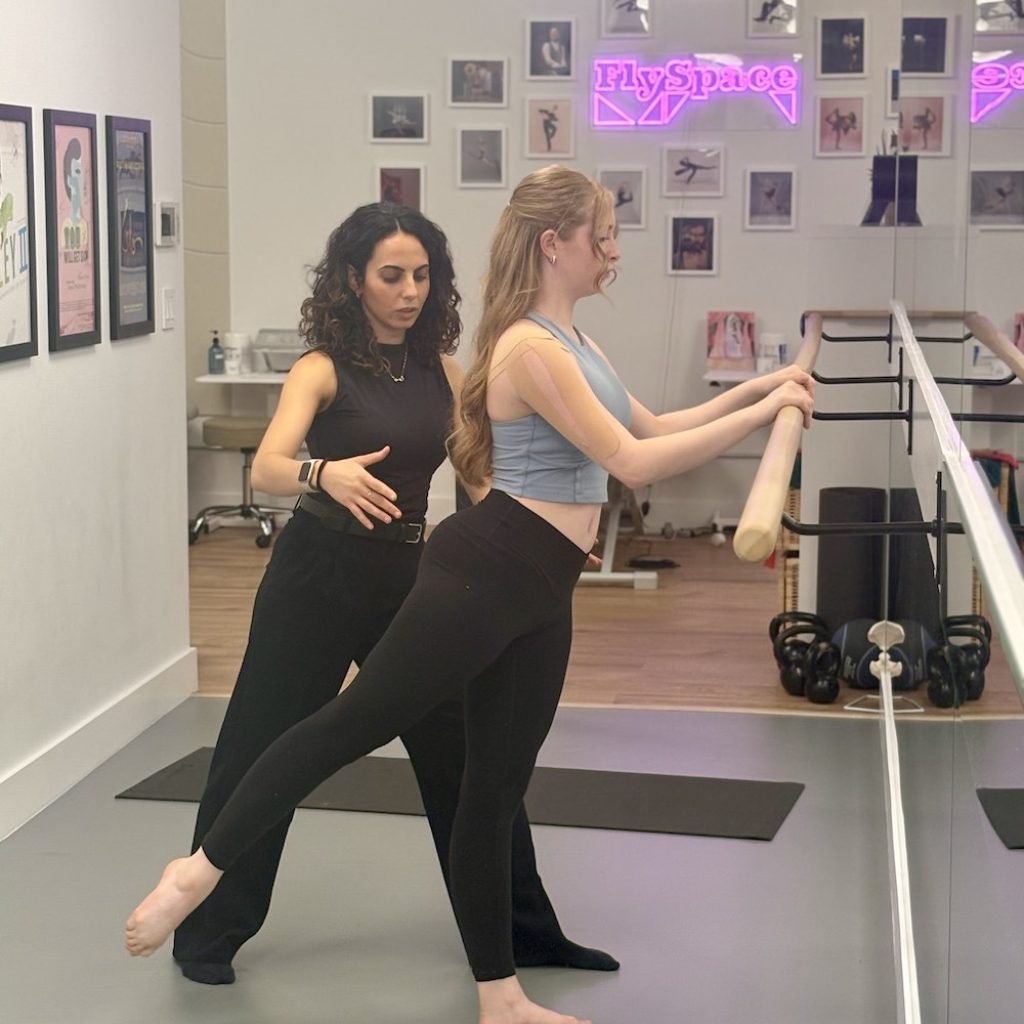Flexibility is a vital requirement for dancers of all ages. Younger dancers, particularly, want flexibility not solely to carry out but additionally to take care of total well being. Generally, youthful college students could lack flexibility in particular areas or expertise total tightness that hinders their dance method. Fashionable life can exacerbate these challenges, with extreme sitting and time spent in entrance of screens contributing to stiffness. Effectively-informed, affected person work is crucial to assist younger dancers stretch safely, achieve flexibility and transfer with suppleness.
Ami Kirollos, PT, DPT, CSCS, a bodily therapist at FlySpace Bodily Remedy in New York Metropolis, notes that occasional tightness is regular for kids. Nevertheless, frequent or power tightness in areas such because the hips, again or legs — particularly in prepubescent kids — warrants consideration. Andrea Zujko, PT, DPT, OCS, COMT, medical supervisor at Westside Dance Bodily Remedy and adjunct school at NYU Tisch College of the Arts, emphasizes that age performs a key position. “There may be a variety of development that begins at about 9 or 10 years previous, proper earlier than the onset of puberty,” she explains.
Age and genetics play a task.
Kirollos advises investigating the foundation reason behind power tightness. “Is there an damage? Weak spot in a muscle or surrounding muscle group can result in tightness or overwork in one other a part of the physique,” she says, utilizing the instance of gluteal weak spot leading to overworked hamstrings. Exercise ranges must also be thought of. “How a lot class are they taking, and at what depth? Conversely, what are they doing exterior of sophistication?” Kirollos notes. Hours spent sitting with poor posture, equivalent to in entrance of a laptop computer, can negatively influence flexibility.
Genetics additionally affect flexibility. Zujko explains, “Every muscle has roughly 50 % quick and slow-twitch fibers. Collagen composition could fluctuate in dancers with larger flexibility.” Physique form and limb size additional contribute to variations in flexibility. Throughout development spurts, notably within the legs, bones develop quicker than muscle mass, probably inflicting tightness. “You don’t need to overstress joints since you would possibly injury them,” Zujko warns.
Kirollos breaks flexibility ranges down by age. Ages 6-10: Youngsters usually have versatile muscle mass and joints, making them naturally free and adaptable. Ages 10-14: Progress spurts throughout puberty can result in tightness, notably within the hamstrings, hip flexors and calves.
The kind of stretching makes a distinction.
Flexibility coaching can profit younger college students if approached appropriately. “Stretching is essential, however there needs to be context,” Zujko says. “As an illustration, ballet requires vital flexibility, whereas faucet doesn’t.” She advocates for utilizing props like blankets, yoga blocks and bolsters to assist the physique. Nevertheless, she cautions towards oversplits or forceful stretching.
Kirollos emphasizes that flexibility coaching is beneficial solely when wanted and stresses educating younger dancers early about protected stretching strategies. “Many younger kids have already got regular and full ranges of movement and will not want intensive stretching,” she says. “If launched, I might prioritize dynamic stretching over static, end-range stretching.” Each specialists warn towards extreme or forceful stretching. “Inflicting extra pressure on myofascial tissue is an enormous no-no,” Zujko remarks.
The kind of stretching issues. “It is sensible to warmth up the physique and work by means of dynamic ranges of movement,” Zujko explains. “Passive stretching for prolonged durations is extra acceptable for cooldowns, with stretches held for at the least 20 to 30 seconds.” She additionally stresses the significance of joint alignment and cautions towards torquing the hips, knees or again throughout stretches.
Yoga could also be helpful for younger college students. Kirollos says, “I can’t consider any contraindications to yoga. Maybe the emphasis must be on consideration, stability and respiratory for teenagers as a substitute of flexibility.” Zujko says yoga is ok, however the instruction needs to be good and our bodies shouldn’t be compelled into hyperextenstion.
Rollers are present in each dance studio and are standard with grownup dancers. For youths, Kirollos and Zujko agree rollers usually are not obligatory. Zujko says that younger pupil’s muscle mass are already extra supple versus an grownup who could have drawback areas that want work. Kirollos provides, “Except they’re coping with a criticism or situation the place it could be useful – for instance, a baby with Sever’s illness.” She says if they’re nearing a development spurt, it could possibly be helpful to start out slowly utilizing a lightweight foam curler.
What academics have to know
Lecturers play a vital position in guiding college students towards correct alignment and protected stretching practices. Gradual will increase in depth, depth and frequency, together with respiratory workout routines, are important. Kirollos suggests introducing dynamic stretching ideas round ages 6-8 and static stretching between ages 8-10. “Very younger dancers could profit extra from stability, coordination and energy coaching than from stretching alone,” she says. Each bodily therapists advocate warning on account of open development plates, which stay till adolescence ends (ages 13-17 for women and 15-19 for boys).
Zujko highlights the significance of clear communication, particularly with younger college students who assume concretely somewhat than abstractly. “Youthful college students can’t maintain excessive positions; they want time to construct energy,” she notes. Kirollos recommends educating college students to take heed to their physique and acknowledge protected stretching sensations. Ache after a stretch, problem respiratory or sharp ache are indicators to cease. She suggests utilizing a “crimson gentle, inexperienced gentle” system to assist kids perceive limits or a 1-10 scale to gauge stretching depth, with a protected vary being 4-6.
Past the dance studio
Bodily exercise ought to lengthen past dance. Working, leaping, skipping and taking part in all contribute to growing younger minds and our bodies. Time away from screens and prolonged sitting might help hold these muscle mass shifting. A connection to the outside and nature are pluses at any age. “Flexibility takes time for the physique to adapt to,” Zujko says, and he or she emphasizes the significance of endurance — maybe the toughest lesson for younger dancers to study.
By Mary Carpenter of Dance Informa.





